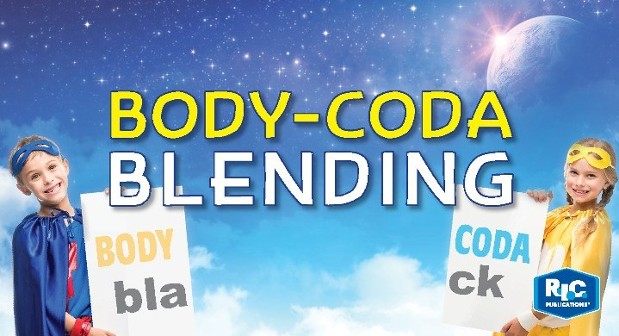- Tuesday 24 July 2018
- 0 Comments
Unsure if you are catering for the many different learning styles of students in your classroom? Need something new and a bit different to facilitate learning the skill of blending? Are you certain your teaching is backed by solid research? Then read on ...
Most teachers teach blending using onset* and rime* or word families like -at, -ab, -ug, -en, -it and so on. They encourage students to add different consonants or consonant blends (onset) to the front of the rime to form a number of different words. It is expected that students will recognise familiar patterns in words when spelling and reading.
According to research, blending using onset* and rime* (or word families)—which is what most teachers use—is actually more difficult for students than other methods. Researchers have found that most children learn blending more easily and much earlier using the body-coda method than by using onset and rime.
*Just to remind you ... every word must have a vowel sound. (Otherwise, it's a letter or sound/phoneme!) The onset is everything before the vowel sound. The rime is the vowel and everything after it in the word. For example:
Body coda sounds like something involving technology, doesn't it? It isn't and it's really very simple. (But your students will think it sounds really cool!)
Here's how it works!
In any spoken word, everything revolves around the vowel sound. It is the summit of the word and the loudest sound, so it's easier for students to break up a syllable on either side of the vowel. So, using the example above, the split-up of the word would look like this:
The body of the word involves everything up to and including the vowel sound. The coda is any consonants that come after the vowel sound (or the last sound).
So why not 'have a go' using the body-coda method to teach blending with your students? Here's some more assistance for you:
- Watch the videos Phonological skill: Body/coda game and Phonological skill #4: Dividing syllables into body and coda.
Happy blending!


